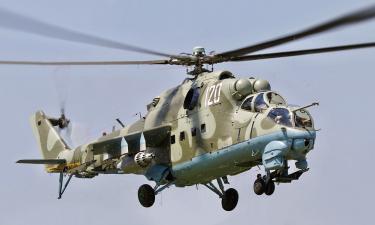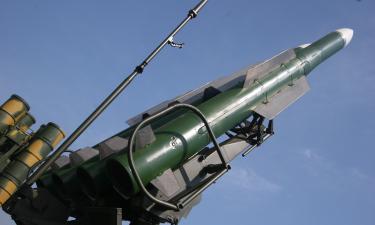ASEAN's 35th anniversary - Russia must cherish its contacts with South East Asia
On Thursday, August 8, the Association of South East Asian Nations (ASEAN) will mark its 35th anniversary. As an economic partner for Russia or as an example for integration in the post-Soviet space, this influential international organisation is worthy of the most serious attention and studying.
The founders of ASEAN set up this organisation in 1967 as a political association aimed against the communist influence in the region - Chinese, Vietnamese and so on. Today the organisation keeps afloat also because of the necessity, but of a somewhat another kind.
The other day in Brunei, the head of this state, Sultan Hassanal Bolkiah, delivering his speech on the occasion of the opening of ASEAN Foreign Ministers' conference, defined quite precisely the main problem both of ASEAN and the whole world: a very great speed of changes in this world. "We reply to one challenge, but another one immediately follow," complained the Sultan to his colleagues.
As the President of Philippines, Gloria Macapagal Arroyo, recently wrote in one of her articles, "it becomes more and more clear now that some nations in South-East Asia - densely populated Indonesia or economically developed Singapore - cannot hope for peace or efflorescence, cannot have hopes for the future if they do not work together and unite their resources ... and do not act jointly at world forums." In other words - without integration there is no hope.
It seems that everything that was going on in ASEAN in the past ten years implied the pooling of resources. Apparently, by the end of this year it will be announced that the six ASEAN countries (the five founders and Brunei) have completed the creation of a free trade zone in which the customs amount to a maximum of five percent. The conditions for the four other countries which have a weaker economy are even easier: they will rid of the customs barriers by the year 2015. And this may happen even sooner, because even the most ardent protectionists in the region can see what is happening with the economy relieved of restrictions: trade between the ASEAN countries has doubled in the past decade; it was going up by 12 percent annually even in the crisis months.
Judging by the speeches at the 30th ASEAN anniversary in 1997, many believed that the region was too big for integration. They worried about what will happen with the poor newcomers in the Association - Vietnam, Laos, Cambodia and Burma, about how to integrate with them if they are so different from other ASEAN countries in their economic level. At the present time, the ASEAN programme for helping the four poor countries is working, but in the past one or two years the problem has receded into the background, because some other, more serious, things have appeared. It has turned out that South East Asia alone with its ten states is not enough for integration. A new free trade zone of a tremendous size is necessary today for survival; it must include also the northern giants: China, Japan and Korea.
The cause is the "Chinese monetary vacuum cleaner:" on the eve of China's entry into the World Trade Organisation, foreign investments which earlier were going to South East Asia started to flow into China. It turned out that the economic integration of ASEAN could not lag behind the integration of China with the rest of the world; otherwise the goods from China will crush its southern rivals. Thus, the choice was very simple: either to unite the resources with China intentionally or to become an appendage of the Chinese economy spontaneously.
The process of rapprochement with the northern countries started in the days of the financial crisis of 1997-1999 when the idea appeared of the creation of the common Asian currency, because small countries do not have chances against speculators who operate with several billion dollars. So far, there is no common currency, but the process of financial integration in the form of exchanging currency "packages" is going on. Thus, today the monetary stability of South East Asia also depends on its northern neighbours.
Of course, all this is a great surprise and a great nuisance for many in ASEAN, because the erosion of the economic foundation of the regional "peculiarity" destroys the concept of containing China and, in general, makes vague the prospects of ASEAN's existence as such. At the same time, another giant is appearing on the horizon, India, whose rapprochement with the South East Asian ten countries is going on very rapidly though the results of this rapprochement are difficult to imagine so far. The only thing that can be done today is to try to balance the growing influence of China or India with closer relations, for example, with the United States, enthusiastically helping it to combat terrorism.
Will ASEAN survive as a political organisation with its clear-cut philosophy of uniting small and weak countries for the sake of being independent of - or, to be more precise, dependent on - the great powers? The political leaders of the ten countries today would like to preserve their "own peculiarity," their independence of China, the United States, India, Japan and so on. This means that ASEAN is already an outdated idea, the method of a political braking of the economic reality. Is that so? This is a very unpleasant conclusion for many.
Up to now, nobody clearly understands what unites these ten so different countries. Possibly, the political will of their leaders, though they constantly compete with each other. Apart from politics, there is something else which keeps these countries together - the closeness of their cultures, a common consumer market, the expanding personal contacts - from ministers to students. In this sense, Philippines is a far away country for the inhabitants of Thailand, for example, and yet it is a country close to them, while China, though it is not so far away, yet it is "abroad." In this situation the similarity with a single Europe is absolutely obvious. After all, the borders in Europe and the ideas of who is a stranger and who is not, exist not only on paper but most of all in the minds of the Europeans.
Russia has so far been a stranger both on the European and Asian space - the integration processes in these two parts of the world is going on without us. Of course, it is necessary to cooperate with Asia whose economy will grow by 5.8 percent this year. Speaking about only the South Eastern part of Asia, that is, about ASEAN, this region is of a special importance for the Russian economy. It is situated far from Russia geographically, therefore the transport and raw material model of cooperation, which Moscow is fond of so much, is not popular there. This model implies deliveries of energy raw materials and the construction of motor roads and pipelines. But technological projects look very promising - such as the construction of a mini-cosmodrome, the creation of a satellite system of tracking typhoons and forest fires, and the joint working out of new materials (all these projects are among those which are now being discussed). Therefore, if Russia wants to be a country of advanced technologies, not simply a supplier of raw materials, then cooperation with South East Asia must be valued and cherished.
Certain hopes are laid on the new ASEAN Secretary General elected in Brunei - citizen of Singapore Ong Ken Yong. May be he will help find an answer to the following question: What Russia should do now that diplomats and politicians from both sides have already played their role of a political ice-breaker, having created a common favourable atmosphere in the region for Russian business?
Subscribe to Pravda.Ru Telegram channel, Facebook, RSS!





